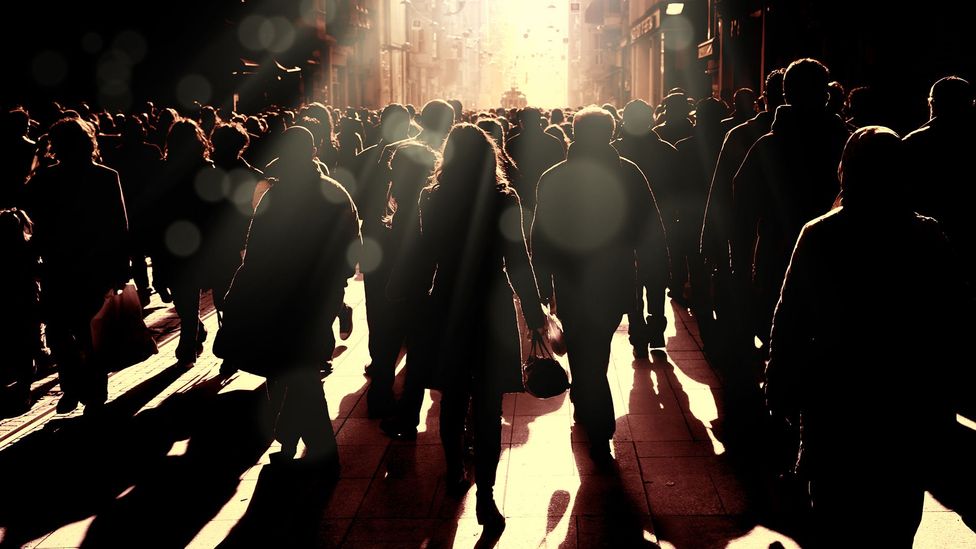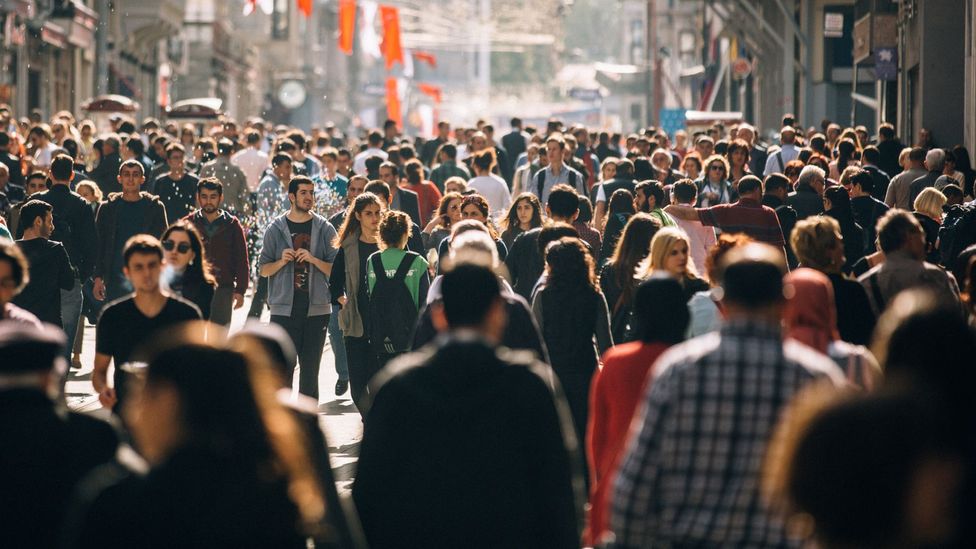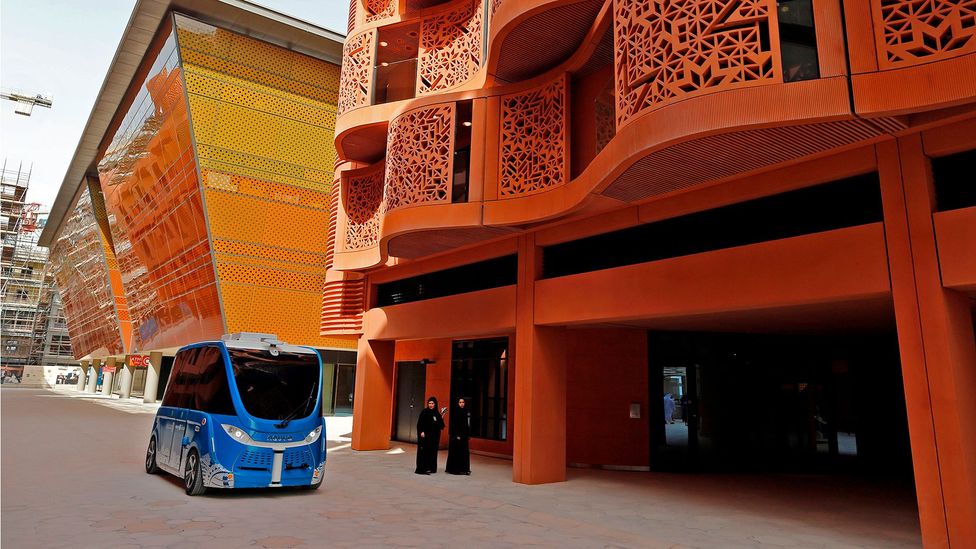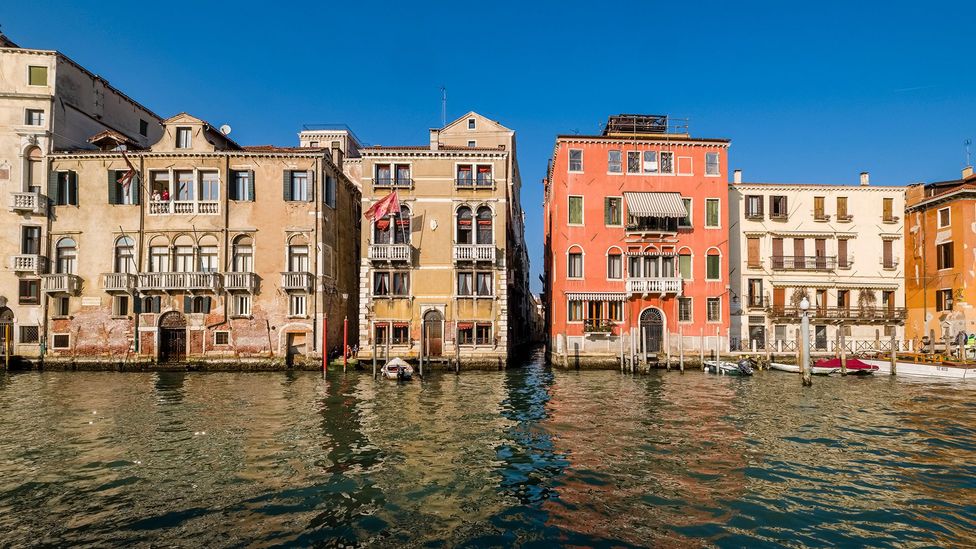Does an Uber or Lyft Driver Know When You Tip Them?
What happens when a urban center bans cars from its streets?

Many modern urban areas take been congenital around cars, with huge amounts of infinite ready bated for roads and parking. Simply what happens when you take them out of the equation?
P
Picture children playing games of football on major urban thoroughfares. Tourists stood in the middle of the street nonchalantly taking photos. Restaurants spilling out onto small squares – and non a car, moped or bus in sight.
Such are my memories of Venice, the merely auto-free city I have ever been to, when a friend and I visited during a student hitch-hiking summer holiday. The Italian city is, of grade, unique in that information technology is built on a series of small islands – yet it is a refreshing experience being able to wander effectually without dodging in and out of traffic.
For the last 100 years, the machine has come to dominate the urban mural. Streets have been widened in many cities to adapt automobiles, and huge amounts of space are given over to parking them. Private vehicles accept revolutionised mobility, but they accept as well introduced many ills, from air pollution to traffic accidents. And today a minor just growing number of cities are trying to design the car out of the urban mural altogether.
Both Oslo in Norway and the Spanish uppercase Madrid have made headlines in recent years for their plans to ban cars from their centres – although neither have entirely got rid of them nonetheless.
You might as well like:
- How air pollution is doing more than than just killing us
- The effects of urban center life on your brain
- Is it really healthier to live in the countryside
Their moves toward this, nonetheless, correspond a broader trend in cities to make driving more than difficult. Whether information technology's London's congestion charges, United mexican states Urban center's 'pico y placa' initiative (where your right to bulldoze on dissimilar days depends on whether your license plate ends in an odd or even number) or several smaller towns such equally Spain's Pontevedra which accept outright bans.
"Our primary objective is to give the streets back to people,'' says Hanna Marcussen, Oslo'south vice mayor for urban development. "It is well-nigh how we want to use our streets and what the streets should exist for. For u.s.a., the street should exist where you lot meet people, eat at outdoor restaurants, where kids play, and where art is exhibited." To do this, Oslo has closed off certain streets in the centre to cars entirely. They accept also removed nigh all parking spots and replaced them with cycling lanes, benches and miniature parks.

The Norwegian capital Oslo is making a concerted try to remove cars from primal streets (Credit: Getty Images)
In that location is also an environmental aspect. Oslo is built in a geological bowl, which during winter in detail, causes the city to suffer from serious air pollution problems. Data from the local regime shows a marked refuse in air pollution over the past decade. There has as well been a drop in trips fabricated by motorcar – from 35% of journeys in 2009 to 27% in 2018 – with a parallel rise in people either walking or using bicycles or public send.
JH Crawford is perchance the world's leading voice on car free cities and an writer of 2 books on the topic. "Likewise the well-documented bug of air pollution and the millions of deaths acquired by traffic every twelvemonth, the largest result cars have on society is the tremendous impairment they practise to social spaces," he says.
Crawford's argument is that cars significantly reduce social interaction. "The places that are nearly pop in cities are e'er the spaces with no cars," he says. They may be parks, squares or pedestrianised areas. He says that in US cities like Houston and Dallas, as much every bit 70% of urban land is given over to parking. "Today'southward housing crisis stems from a lack of state. Get rid of cars and the problem is solved immediately."
Car-free controversy
A city without cars sounds like a nice idea but is it possible – or even desirable? What about emergency services? Or people who have mobility problems? And what well-nigh sprawling suburbs; is the notion of going car free but relevant to young professionals who wish to alive in compact city centres?
"The quickest way to brand a city centre die is to stop people getting in there," says Hugh Bladen of the Clan for British Drivers. Britain'due south declining high streets won't exist helped past restrictions on driving, he argues, "otherwise boondocks centres just go full of druggies and drunks". He acknowledges that "some towns and cities get clogged up but that'south but because of poor planning; they should take meliorate parking options".

If yous forbid people coming to a city centre, it dies, but with the right alternative forms of ship, a car ban can lead areas to thrive (Credit: Getty Images)
Ransford Acheampong, an urban planning researcher at the University of Manchester, says that removing cars would exist helpful to reduce pollution and could improve public wellness "but if yous take cars away from people, you need to exist able to provide an alternative". Even in Europe, which has relatively good public transport, many people's commutes and lifestyles just wouldn't exist possible without a individual automobile.
This is the concept of the last mile, which is the connectedness between public transport and the final part of a person's journeying. Until public ship can make this gap smaller, people will still desire to drive cars.
While Oslo'southward Marcussen appreciates the argument that taking away someone'southward auto is to interfere in their freedom, she argues that "in many ways not restricting cars is limiting freedom of other people. Cars make information technology more difficult for children to play in the street or elderly people to cross the road. Oslo also has an air pollution problem – yous could argue that cars are restricting the freedom of people with asthma who sometimes take to stay indoors when it gets too bad."
What would it take to make a metropolis carless?
In the Great City Chengdu Master Programme, everything is walkable. At that place are no cul-de-sacs and there is a high number of intersections which brand information technology very easy to get effectually past foot or bicycle. In that location is likewise vertical connectivity, with bridges betwixt high rises. The Great City suburb, which was designed to house 100,000 people, is merely 1 square kilometre across and information technology would never take more than than ten minutes to walk from one point to another.
Unfortunately information technology never got built, explains Chris Drew of SmithGill, the Us architecture firm that was commissioned to design the suburb shut to on the outskirts of Chengdu in 2012. Yet, the blueprint shows how an urban area could be designed to function without cars.
"We wanted it to be a alive, work, play environment, where children could get to school without the need for a motorcar, where people didn't take to travel great distances to work," says Drew. With two rails connections to the rest of the metropolis, no resident would need to drive anywhere.

Abu Dhabi'due south Masdar City was originally supposed to exist off-limits to cars (Credit: Getty Images)
There are a couple of other examples of new cities which have more than or less designed cars out. In a previous role, Drew worked on the UAE'south Masdar City, which was originally designed to exist entirely auto free, although vehicles can now be found roaming its streets. SmithGill likewise helped blueprint the Legacy Masterplan for Dubai'southward 2020 Earth Off-white. The area is intended to be entirely walkable and largely free of cars on completion.
Given a blank slate, Crawford describes a city of interconnected nodes, each of which would have a fundamental tram stop or light rail surrounded by dense housing, shops and offices – residents would never live more than five minutes' walk from public send. In his theoretical design, the most time it would have to cantankerous the metropolis would be merely over half an 60 minutes.
But what most retrofitting existing cities, where most people live today? Hanna Marcussen explains the arroyo that Oslo took: "We began with pilots to let people meet what it would exist similar and we began making changes little by little. For example i of the nicest squares in Oslo is outside the town hall only until recently it was total of cars. When we closed it off about a year ago, people thought it was foreign – but at present they remember it was weird that we always allowed cars to drive through at that place at all."
A car-free futurity?
"If you take the optimistic view, then this is a trend that is likely to continue," says Acheampong. "If you look at the statistics, nosotros seem to have gone beyond 'peak car' ownership, and driving now seems to be in the turn down. There is too a large generational departure betwixt millennials and baby boomers," he says, with youngsters turning away from private ownership. All of which suggests cars' current authorisation may gradually stage out of its ain accord.

Non all cities can exist as automobile-costless equally Venice - but their planners can bring pedestrians and cyclists to the forefront (Credit: Getty Images)
That said, he also points out there is growing demand for new convenient mobility options; services such equally Uber and Lyft are cartoon people away from public transport, as may democratic vehicles. "In the end, they're still cars," he adds. He also notes that in much of the developing world car buying is on the rise and governments are mainly prioritising car ownership over other forms of ship.
A lot of journeys besides happen in metro areas that are nowhere nearly the heart of the metropolis – call up of London's M25, or Beijing, which has seven concentric band roads. It is too relatively easy for old European cities, which existed for centuries without cars to get rid of them, merely not and then much elsewhere.
How far the trend for motorcar gratis cities goes is however to be seen. But when I left the machine-free islands of Venice on my student hitch hiking holiday, the just manner to journey onwards was to stand by the highway – and wait for a motorcar.
--
Join one million Future fans by liking united states on Facebook , or follow u.s.a. on Twitter or Instagram .
If you liked this story, sign up for the weekly bbc.com features newsletter , called "The Essential List". A handpicked selection of stories from BBC Futurity, Culture, Capital, and Travel, delivered to your inbox every Friday.
Source: https://www.bbc.com/future/article/20191011-what-happens-when-a-city-bans-car-from-its-streets
0 Response to "Does an Uber or Lyft Driver Know When You Tip Them?"
Post a Comment